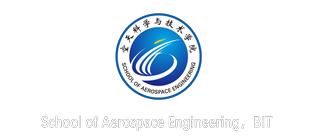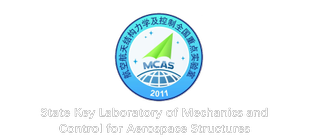时滞状态正反馈在振动控制中的新特征
王在华,李俊余
摘要:以单自由度线性振动系统为例,采用稳定性切换方法并计算最大实部特征根,研究了时滞状态正反馈在镇定系统不稳定运动和改善系统稳定性方面的作用.研究发现,时滞位移正反馈明显优于时滞位移负反馈,表现为: (1)正反馈控制可以用较小的时滞去镇定不稳定运动和改善系统稳定性; (2)正反馈控制可容许的时滞范围大于负反馈控制的可容许时滞范围; (3)正反馈对应的闭环系统的最大实部特征根的实部的极小值可显著小于负反馈对应的闭环系统的最大实部特征根的实部的极小值;因而,在相同的初始条件下,正反馈作用下的闭环系统比之负反馈作用下的闭环系统可以更快地稳定到平衡点.研究还发现,对时滞速度反馈与时滞加速度反馈来说,负反馈优于正反馈;而对相同的反馈增益,时滞位移正反馈优于时滞速度正反馈和时滞加速度正反馈.
关键词:镇定;振动控制;时滞正反馈;稳定性切换;特征根
New Features of Positive Time-Delayed Feedbacks in Vibration Control
Zaihua Wang, Junyu Li
Abstract:Compared with negative feedbacks that are used intensively, positive feedbacks have been used relatively few in control theory and control engineering, because positive feedbacks enlarge state variations so that they deteriorate the system stability. This is not the case if a delay involves in the feedback path. On the basis of stability switches and the rightmost characteristic roots that determine the system stability, this paper investigates the control effect of positive feedbacks in stabilizing unstable motion as well as in improving stability of the typical linear vibration system. One of our observations is that a time-delayed positive displacement feedback works more effectively than the corresponding negative feedback as shown in the following three aspects: (1). the delay values that are used for stabilization via positive feedback are smaller than the admissible delays via negative feedbacks; (2). the admissible delay range for stabilization via positive feedback is broader than that via negative feedbacks; (3). in a given range of delay, the minimal value of the real parts of the rightmost characteristic roots of the closed-loop under positive feedback control is much smaller than that for the case of negative feedback, so that with such a delay, the state of the closed-loop under positive feedback approaches to the equilibrium much more quickly than the case of negative feedback, if the states start from the same initial conditions. For the same stabilization problem, however, negative feedback works more effectively than positive feedback if a delayed velocity feedback or a delayed acceleration feedback is performed. In addition, with the same feedback gain, a positive delayed displacement feedback is preferable than a positive delayed velocity feedback or a positive delayed acceleration feedback.
Keyword:stabilization; vibration control; positive delayed feedback; stability switches; characteristic roots
原文链接:http://lxxb.cstam.org.cn/EN/Y2010/V42/I5/933





